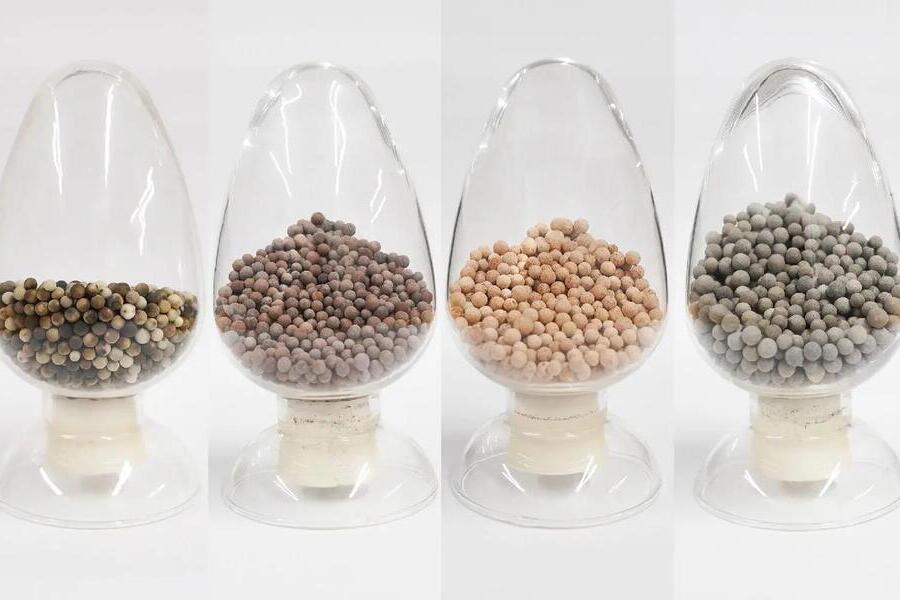
Catalysts and Carrier

Applications of Catalysts and Carriers
Catalysts and carriers find extensive applications across numerous fields like chemical industry, energy, and environment. Here’s a detailed breakdown:
1. Chemical Industry
– Petroleum Refining
– Catalytic Cracking: In petroleum refining, catalysts (e.g., molecular sieves) are often supported on porous alumina. These catalysts break down heavy oil molecules into lighter products (gasoline, diesel). The carrier provides a large surface area to highly disperse active catalyst components, boosting efficiency. For instance, in fluid catalytic cracking units, carriers ensure stable, continuous reactions as catalysts circulate.
– Catalytic Reforming: Pt – Re (platinum – rhenium) catalysts, supported on halogen – modified γ – alumina, convert naphtha’s alkanes/cycloalkanes into aromatics and high – octane gasoline. This improves gasoline quality and aromatics yield.
– Organic Synthesis
– Hydrogenation Reactions: In ammonia synthesis, iron – based catalysts on alumina carriers produce ammonia from N₂/H₂ at high T/P. For unsaturated hydrocarbon hydrogenation (e.g., alkenes/alkynes to alkanes), Pd/Ni catalysts on activated carbon carriers are common.
– Oxidation Reactions: For ethylene – to – ethylene oxide production, silver catalysts on α – alumina carriers drive the reaction, supplying a key petrochemical raw material.
2. Energy Sector
– Fuel Cells
– Proton Exchange Membrane Fuel Cells (PEMFCs): Pt – based catalysts on carbon carriers maximize active sites via high surface area, accelerating H₂/O₂ electrochemical reactions and boosting efficiency. Carriers also enhance catalyst stability, extending fuel cell lifespans.
– Biomass Energy Conversion
– Biomass Pyrolysis Liquefaction: Zeolite – based catalysts, supported on inert silica, convert biomass into bio – oil, gas, and char. The catalyst – carrier system optimizes product distribution, improving bio – oil yield/quality.
3. Environmental Field
– Automotive Exhaust Purification
– Three – way catalytic converters use Pt/Pd/Rh catalysts on honeycomb ceramic carriers (e.g., cordierite). The carrier’s large surface area and thermal stability enable redox reactions: CO/HC/NOₓ → CO₂/H₂O/N₂, cutting emissions.
– Industrial Waste Gas Treatment
– For VOC – laden waste gas, Mn/Ce oxide catalysts on TiO₂ carriers oxidize VOCs to CO₂/H₂O at low T. Carriers boost catalyst activity/stability, ensuring efficient pollutant breakdown.
4. Food & Pharmaceutical Industries
– Food Industry
– In hydrogenated oil production (e.g., margarine/shortening), Ni catalysts on diatomite carriers convert unsaturated to saturated fatty acid glycerides, enhancing oil stability/melting point.
– Pharmaceutical Industry
– In chiral drug synthesis (e.g., antibiotics/antihypertensives), chiral catalysts on polymer carriers enable asymmetric reactions, ensuring precise molecular configurations for efficacy/safety.
5. Other Fields
– Fine Chemicals
– Catalyst – carrier systems drive esterification/alkylation in perfume/dye production, boosting selectivity/yield for high – quality fine chemicals.
– Nanomaterial Preparation
– For carbon nanotube (CNT) synthesis, Fe/Co/Ni catalysts on alumina carriers control CNT growth/morphology via chemical vapor deposition, tailoring structures for specific applications.